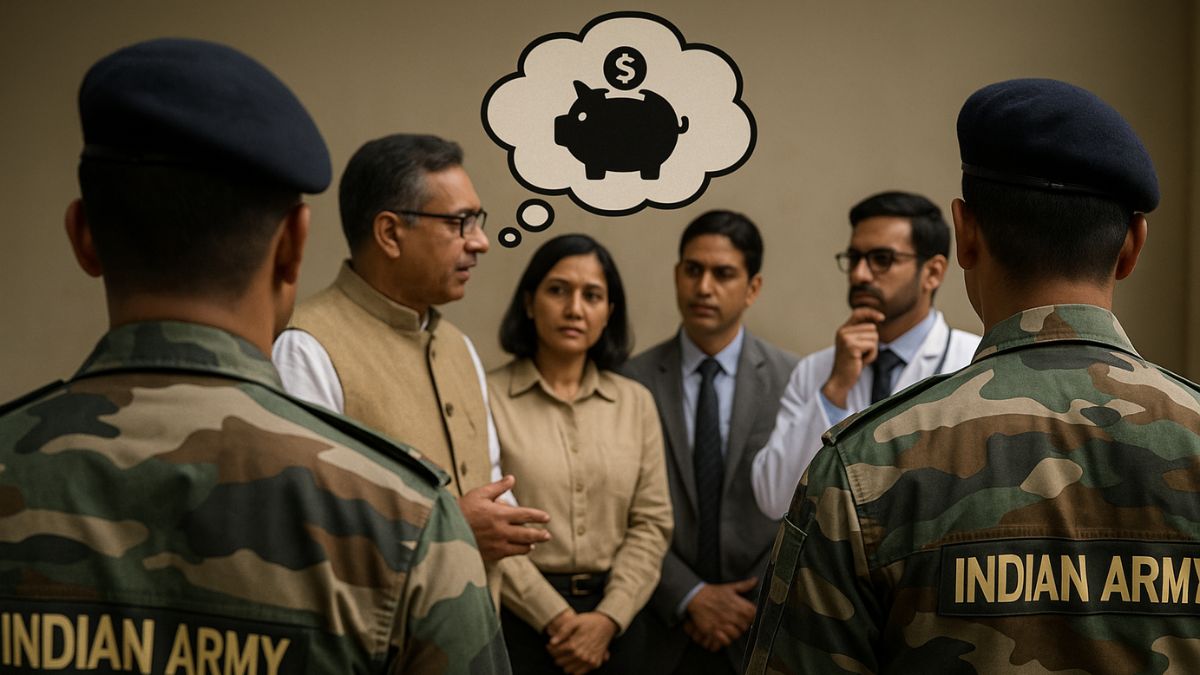India’s armed forces are consistently ranked among the country’s most respected institutions. Yet when pay and parity questions surface, they remain peripheral to the debate. The reason is structural: soldiers lack both electoral clout and bureaucratic leverage. Bound by law to political neutrality, they cannot unionise or lobby. In a system where farmers can mobilise votes and bureaucrats shape the rules, the military remains dependent on others to speak on its behalf.
This imbalance has left a lasting mark on how soldiers are compensated. Despite their central role in national security, they face stagnation in career progression, inequitable allowances, and repeated exclusion from mechanisms that cushion other government employees.
What inequities persist in pay and allowances?
The Seventh Central Pay Commission (2015) exposed stark contrasts. Soldiers serving in Siachen received a capped hardship allowance of Rs 31,500, while an IAS officer in Shillong drew a “special duty allowance” often exceeding Rs 60,000. Disability pensions were flattened into slabs, leaving injured soldiers in combat situations worse off than civilians who sustained accidents at home.
The denial of Non-Functional Upgrade (NFU) is another major grievance. NFU ensures civil servants move up the pay scale when their batchmates do, insulating them from the pyramid bottlenecks of promotion. The armed forces, where only 30% reach Colonel and less than 1% rise to Major General, remain excluded. This reinforces stagnation and disparity with civilian peers of the same intake year.
Why does representation remain absent in pay decisions?
No Central Pay Commission has ever had a serving military member. Despite the armed forces forming nearly one-third of government employees, commissions are staffed almost entirely by bureaucrats. Proposals for a separate military pay commission or even a military representative have been repeatedly dropped.
This absence is systemic, not accidental. Soldiers cannot form pressure groups, organise protests, or vote as a bloc. Their political neutrality, while essential to democracy, removes the very tools used by others to secure favourable outcomes. The result is predictable: anomalies flagged, veterans protest, petitions filed in courts, partial corrections made—while disparities remain.
What are the consequences for morale and recruitment?
Pay inequities are not simply numbers on a slip. They cut to the question of dignity. When a civilian officer in a safer post earns more than a soldier in Siachen, the message about value is unmistakable. Morale erodes further when officers plateau early, when disability in the line of duty is under-compensated, and when earnings lag behind peers in other services.
Recruitment is also affected. Young Indians weigh the military against the civil services not just for prestige but for long-term rewards. In one career track, every IAS officer reaches Joint Secretary. In the other, only a fraction of officers make Major General. Without NFU, the comparison becomes starker still, deterring capable candidates.
What can be done to restore balance?
Two steps are frequently cited. First, the inclusion of a defence expert in the 8th Pay Commission to ensure early retirements, combat risk, and steep career pyramids are factored into recommendations. Second, greater transparency in defining equivalence. Allowances and pay should correspond to actual responsibility and hardship, not to the lobbying power of cadres.
The sums involved are modest compared to the defence budget. The principle at stake is fairness. Soldiers will never wield electoral power, nor should they. But neutrality requires the state to protect their dignity. Denying them parity while extending it to peers in the IAS, IPS and CAPFs is less about fiscal restraint than about institutional neglect.
As India prepares for the 8th CPC, the issue is not one of privilege but of justice. A country that depends on its armed forces as the final insurance of security cannot afford to undervalue them in pay and policy.
